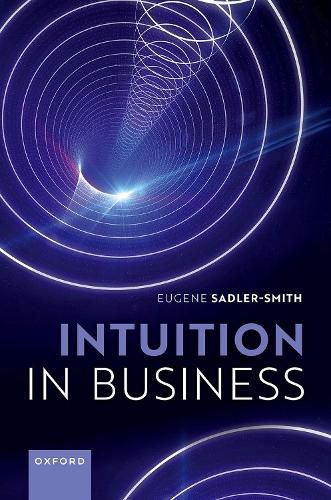Readings Newsletter
Become a Readings Member to make your shopping experience even easier.
Sign in or sign up for free!
You’re not far away from qualifying for FREE standard shipping within Australia
You’ve qualified for FREE standard shipping within Australia
The cart is loading…






This book explores the science behind intuitive decision-making in business, and shows how people’s innate capacity for intuition can be nurtured and strengthened to maximize performance. We are all familiar with those perplexing situations when we think we ‘just know’ without knowing how or why we know. In professional life it might be the job candidate’s CV that checks all the boxes but somehow doesn’t stack-up: should we perform some due diligence and dig a little deeper? In personal life it could be the apartment that we’re looking to rent that just felt right the minute we walked through the front door: should we trust our hunch and grab it while we can? What if time is of the essence? What if there isn’t any more data to be had in the time available?
In this volume, Eugene Sadler-Smith examines why situations like these often leave us in a quandary, and why these decisions so often leave us in two minds. He reveals that metaphorically speaking, we have two minds in one brain: an ‘analytical mind’ and an ‘intuitive mind’, which sometimes come to quite different conclusions about what we ought to do in those consequential decisions that permeate our professional and personal lives. Rather than thinking of our intuitive and analytical minds in constant battle with each other, we might instead think of them as two information-processing systems that have evolved to complement each other. The main idea of this book is that our analytical mind evolved to ‘solve’ whilst our intuitive mind evolved to ‘sense’. Neither is infallible, and our intuitions can be both flawed and marvellous at the same time. The author’s clear and detailed explanation of the science behind intuition reveals how we can make intelligent use of our intuition to sense and solve our way through a world that is fast-moving, complex, and uncertain.
$9.00 standard shipping within Australia
FREE standard shipping within Australia for orders over $100.00
Express & International shipping calculated at checkout
Stock availability can be subject to change without notice. We recommend calling the shop or contacting our online team to check availability of low stock items. Please see our Shopping Online page for more details.
This book explores the science behind intuitive decision-making in business, and shows how people’s innate capacity for intuition can be nurtured and strengthened to maximize performance. We are all familiar with those perplexing situations when we think we ‘just know’ without knowing how or why we know. In professional life it might be the job candidate’s CV that checks all the boxes but somehow doesn’t stack-up: should we perform some due diligence and dig a little deeper? In personal life it could be the apartment that we’re looking to rent that just felt right the minute we walked through the front door: should we trust our hunch and grab it while we can? What if time is of the essence? What if there isn’t any more data to be had in the time available?
In this volume, Eugene Sadler-Smith examines why situations like these often leave us in a quandary, and why these decisions so often leave us in two minds. He reveals that metaphorically speaking, we have two minds in one brain: an ‘analytical mind’ and an ‘intuitive mind’, which sometimes come to quite different conclusions about what we ought to do in those consequential decisions that permeate our professional and personal lives. Rather than thinking of our intuitive and analytical minds in constant battle with each other, we might instead think of them as two information-processing systems that have evolved to complement each other. The main idea of this book is that our analytical mind evolved to ‘solve’ whilst our intuitive mind evolved to ‘sense’. Neither is infallible, and our intuitions can be both flawed and marvellous at the same time. The author’s clear and detailed explanation of the science behind intuition reveals how we can make intelligent use of our intuition to sense and solve our way through a world that is fast-moving, complex, and uncertain.